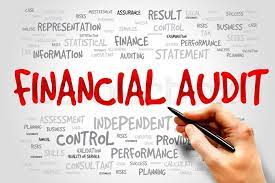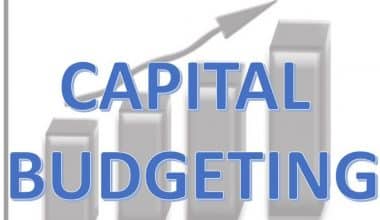The significance of leading economic indicators lies in their ability to provide early warning signals about potential changes in the business cycle. By observing patterns and trends in these indicators, economists can anticipate shifts in economic conditions, such as recessions, expansions, or periods of stability. This information discusses the leading economic indicator that is valuable for policymakers who can use it to implement appropriate measures to mitigate economic downturns or stimulate growth.
What Do Leading Economic Indicators Mean?
Leading economic indicators are statistical measures that provide insights into the future direction of an economy. Economists, policymakers, and investors use this to assess the overall health and potential growth of an economy. Leading indicators are considerably determinant to be forward-looking, as they often change before the broader economy does, and they can help anticipate economic turning points.
Key Points about Leading Economic Indicators
- Purpose: The primary purpose of LEIs is to provide insights into the future direction of the economy.
- Components: Leading Economic Indicators can encompass a wide range of data points. Which include but are not limited to stock market performance, interest rate spreads, and building permits. It also encompasses consumer, manufacturing activity, and labor market indicators
- Composite Index: To simplify the analysis, LEIs are often combined into a composite index.
- Interpretation: Economists and analysts interpret changes in leading indicators relative to their historical trends and the overall state of the economy.
- Limitations: While LEIs provide valuable insights, they are not infallible and should be used in conjunction with other economic data.
Applications of Leading Economic Indicators
- As a consequence, investors may organize and schedule their access to certain information. Their release timetable is distinct.
- They show the direction the economy is going.
- They help analysts forecast future investment opportunities.
Restrictions of LEI
- They have to be properly interpreted.
- Most of the information is a little erroneous.
- Gross domestic product (GDP) measurement is almost impossible.
List of Some Leading Economic Indicators
#1. Stock Market Indices
Stock market performance is often seen as a leading indicator of economic activity. Rising stock prices are generally associated with positive investor sentiment and can indicate expectations of future economic growth.
#2. Consumer Confidence Index
Consumer confidence reflects the optimism or pessimism of consumers regarding their financial situation and the overall state of the economy. Higher consumer confidence levels suggest increased consumer spending, which can stimulate economic growth.
#3. Purchasing Managers’ Index (PMI)
The PMI measures the economic activity of the manufacturing sector. It surveys purchasing managers’ opinions on factors such as new orders, production levels, employment, and supplier deliveries. A PMI reading above 50 indicates expansion, while a reading below 50 suggests contraction.
#4. Housing Market Indicators
Indicators such as housing starts, building permits, and home sales can provide insights into the strength of the housing market and consumer spending patterns. A robust housing market often signifies a healthy economy.
#5. Leading Credit Index
This index measures the availability and cost of credit, which can influence business investment and consumer spending. Expanding credit availability can stimulate economic growth, while tightening credit conditions can slow it down.
#6. Business Investment Indicators
Metrics like business spending on capital goods, and orders for durable goods. Business investment surveys indicate corporate investment plans and can signal future economic expansion or contraction.
#7. Initial Jobless Claims
The number of individuals filing new claims for unemployment benefits can provide an early indication of changes in employment levels. Rising jobless claims may suggest weakening labor market conditions and a potential economic downturn.
Index of Leading Economic Indicators
The Index of Leading Economic Indicators (LEI) is a composite index created by The Conference Board, an independent research organization. Designing to forecast the direction of economic activity in the United States. The LEI incorporates several different economic indicators and aggregates them into a single measure. The LEI is done using a statistical methodology that assigns weights to each component based on its perceived significance as a leading indicator. By tracking the changes in the LEI over time, economists and policymakers can gain insights into the future direction of the U.S. economy.
Components of the Leading Economic Indicators
#1. Average Weekly Hours Worked in Manufacturing
This indicator measures the average number of hours worked by employees in the manufacturing sector. Longer work hours often indicate increased demand and economic expansion.
#2. Building Permits
The number of building permits issued for new construction projects is a leading indicator of future economic activity in the construction industry. Higher building permit numbers suggest future growth and investment.
#3. Stock Market Performance
The LEI incorporates stock market indicators such as the S&P 500 Index to capture investor sentiment and expectations about future economic conditions.
#4. Consumer Expectations
This component reflects consumers’ outlook on the economy, employment, and income prospects. It is often a measure through which consumer surveys and sentiment indices.
#5. New Orders for Consumer Goods and Materials
This indicator tracks the number of orders placed by businesses for goods and materials that are used in the production of consumer goods. Increasing new orders indicate growing demand and economic expansion.
#6. Manufacturers’ New Orders for Nondefense Capital Goods
This component measures the volume of orders received by manufacturers for capital goods, excluding defense-related orders. It provides insights into businesses’ investment plans and future economic activity.
#7. Interest Rate Spread
The difference between short-term and long-term interest rates, such as the yield curve, is considered a leading indicator. Inverted yield curves, where short-term rates exceed long-term rates, have historically preceded economic downturns.
Conference Board Leading Economic Indicators
The Conference Board Leading Economic Index (LEI) is a widely followed composite index created by The Conference Board. It is designed to provide a comprehensive view of the U.S. economy and predict its future direction. The LEI combines several individual leading indicators, each of which reflects different aspects of economic activity.
Aspects Related to the Conference Board’s Leading Economic Indicators
#1. Methodology
The Conference Board uses a statistical methodology known as the composite approach to construct the LEI.
#2. Long-standing History
The Conference Board has been calculating and publishing the LEI for several decades, providing a long-standing and trusted source of leading economic indicators.
#3. Revised Components
The Conference Board periodically reviews and updates the components of the LEI to ensure their relevance and effectiveness as leading indicators.
#4. Global Perspective
The organization also produces leading economic indicators for several other countries and regions worldwide. That’s aside from its primary focus which is the U.S. economy.
#5. Publicly Available Data
The Conference Board publishes the LEI and its components regularly, making the data publicly available to economists, researchers, policymakers, and the public.
#6. Business Cycle Analysis
The Conference Board also publishes a range of business cycle indicators and tools. These resources help track and analyze the different phases of the business cycle.
US Leading Economic Indicators
Several organizations and institutions compile leading economic indicators for the United States. Here are some recognized Sources of Leading Economic Indicators for the U.S.
#1. Conference Board Leading Economic Index (LEI)
The Conference Board produces the LEI, which is a composite index of several leading indicators that aim to forecast the direction of the U.S. economy.
#2. Institute for Supply Management (ISM) Purchasing Managers’ Index (PMI)
The ISM PMI is a widely followed indicator that measures the economic activity of the manufacturing sector in the U.S. A reading above 50 indicates expansion, while a reading below 50 suggests contraction.
#3. Bureau of Economic Analysis (BEA) Leading Economic Index (LEI)
The BEA produces its version of the LEI, which incorporates various economic indicators to assess the future direction of the U.S. economy. It includes indicators such as stock prices, housing permits, and interest rate spreads.
#4. Federal Reserve Bank of Philadelphia’s Leading Index for the United States
The Philadelphia Fed produces a leading index that incorporates 10 economic indicators to forecast economic activity in the U.S. It includes data on housing permits, manufacturing new orders, and interest rate among other factors.
#5. Federal Reserve Bank of Chicago National Activity Index (CFNAI)
The CFNAI is a monthly index that tracks overall economic activity and inflationary pressures in the United States. It includes 85 indicators across various economic sectors, providing a broad view of the national economy.
#6. Consumer Confidence Index (CCI)
The Consumer Confidence Index, produced by The Conference Board, measures consumer sentiment regarding current and future economic conditions. It is based on consumer surveys and reflects consumer spending patterns.
#7. Initial Jobless Claims
This indicator, published weekly by the U.S. Department of Labor, measures the number of individuals filing new claims for unemployment benefits. It provides insights into labor market conditions and can be an indicator of economic health.
What are the Three Types of Leading Indicators?
The three types of leading indicators are as follows:
- Stock market indicators
- Yield curve indicators
- Leading economic index (LEI)
What are Leading and Lagging Indicators?
Leading indicators are measurements or signals that are used to predict or forecast future changes or trends. They are forward-looking and include activities or trends that can indicate changes to come. Some examples of leading indicators include customer demand, product development pipelines, and employee engagement levels.
Lagging indicators are measurements or signals that reflect past performance or outcomes. They are backward-looking and include data that helps to evaluate past successes and failures. Some examples of lagging indicators include financial statements, market share, and customer satisfaction scores.
How Do You Identify Leading Indicators?
Identifying leading indicators involves analyzing data and economic variables that have historically shown a consistent pattern of changing direction before the broader economy does.
Here are some steps to take to identify leading indicators:
- Understand the business cycle
- Review historical data
- Conduct statistical analysis
- Consider economic theory
- Monitor academic research and expert opinions
- Use economic forecasting tools
- Stay updated and adopt
Is GDP a Leading Indicator?
No, GDP is a lagging indicator, meaning it reflects the past performance of the economy rather than providing a forward-looking view.
GDP measures the total value of goods and services produced within a country’s borders over a specific period, usually on a quarterly or annual basis. It takes time for data on economic output to be collected and compiled into GDP figures.
Conclusion
Leading Economic Indicators refer to a set of key metrics and data points that provide valuable insights into the overall health and direction of an economy. These indicators are considered leading because they often precede and help predict changes in economic conditions. By analyzing these indicators, economists, businesses, investors, and policymakers gain a deeper understanding of economic trends and can make informed decisions. These indicators encompass a wide range of factors that reflect different aspects of economic activity. They can include measures related to the stock market, consumer behavior, housing market, manufacturing activity, business sentiment, and more.
Leading economic indicators play a crucial role in decision-making processes for businesses and investors. By monitoring these indicators, they can assess the current state of the economy and make strategic decisions regarding investments, resource allocation, and risk management. For example, a decrease in consumer confidence or a slowdown in manufacturing activity may indicate a potential economic downturn, prompting businesses to adjust their strategies accordingly.
Related Articles
- CIRCULAR ECONOMY: Definition, How It Works & Benefits
- ECONOMIC SYSTEM. Types Of Economic System Of The U.S
- ECONOMIC COLLAPSE: How Close are we to Total Collapse
- ECONOMIC CRASH 2023: How To Prepare For The Coming Crisis
- Economic Profit: Formula, Calculator and How to Calculate It.






